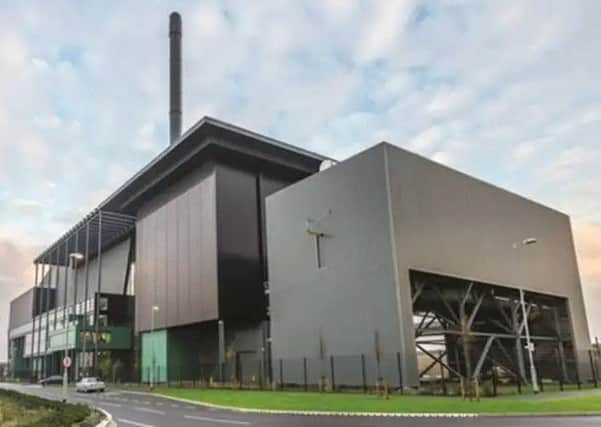Half of county's waste burnt to make power


Between April 2017 and March 2018, 181,263 tonnes of rubbish was burned in Lincolnshire, according to the latest Department for Environment, Food and Rural Affairs figures.
This was all used as fuel to generate heat and electricity at specialist energy from waste power facilities such as the one at North Hykeham.
Advertisement
Hide AdAdvertisement
Hide AdAcross England, burning rubbish is becoming more common. A cross party report, launched in July in the House of Lords, called on the Government to take oversight of the industry and introduce an incineration tax, however authorities say the waste diverted from landfill generates low-carbon power, helping to achieve recycling targets.
The second most common way of disposing of rubbish in Lincolnshire was recycling. In 2017-18, 163,101 tonnes of waste, 45 per cent of the total, was recycled or composted. This has fallen slightly from 50 per cent in 2014-15. Waste dumped in landfills accounted for four per cent of the total.
The Government wants half of all household waste to be recycled by 2020 nationally, and landfill to be reduced to 10 per cent by 2035.
Shlomo Dowen, of United Kingdom Without Incineration Network, urged for less burning to reduce air pollutants and said: “We need to stop burning recyclable material.
Advertisement
Hide AdAdvertisement
Hide Ad“Separate collection of food waste should be accompanied by increasing the range of recyclable material collected at the kerbside.”
Coun Eddy Poll, chairman of the Lincolnshire Waste Partnership, and Executive Councillor for Commercial and Environmental Management at Lincolnshire County Council, responded: “Last year, we reduced the amount of waste in Lincolnshire going to landfill to less than 12,000 tonnes.
“We did this by recycling as much as practical, and sending 164,000 tonnes of currently non-recyclable waste to our Energy from Waste (EfW) facility. The EfW plant generates electricity, is safe, and doesn’t produce pollutants like methane that landfill waste does. Not only this, it is economical and offers value for the tax payer.”